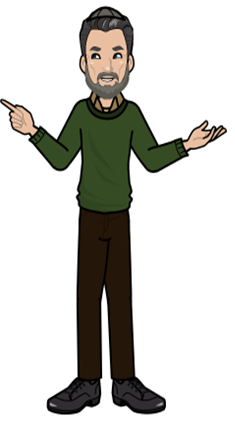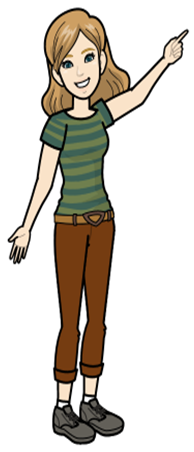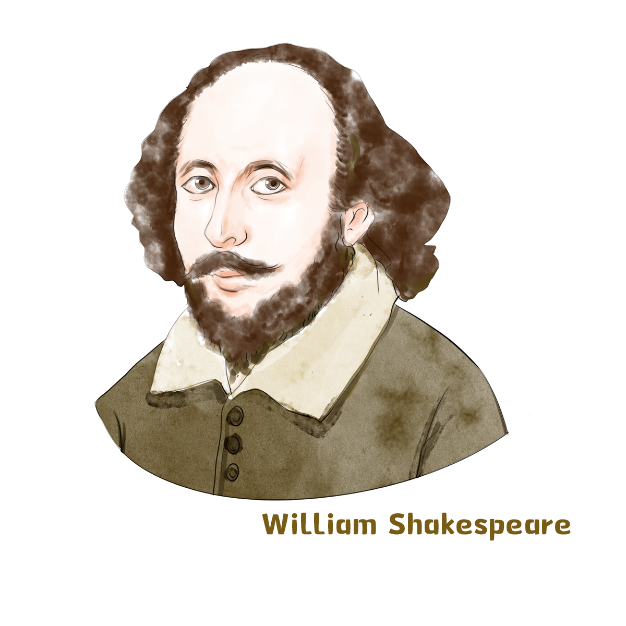I. DETERMINERS: ANOTHER, OTHER, OTHERS, THE OTHER, THE OTHERS
- USING ANOTHER

“An” means one, right? Therefore “an + other” (another) is a determiner that means one more noun (object, person, anything. It doesn’t matter which). We always use another before a singular - countable noun. For example:
- This sandwich is delicious! Can I have another?
(One more. It doesn´t matter which)
- I was planning to wear my blue dress but it is dirty. I´ll have to wear another.
(One more dress. It doesn´t matter which)
- That was a good karaoke song we sang together. Let´s sing another!
(You can also say: Let´s sing another song or Let´s sing another one.
- This apple juice is delicious! I´ll have another. (glass of apple juice).
II. USING OTHER
“Other” is a determiner that means some more nouns (objects, persons, anything. It doesn’t matter which ones). We always use other before indefinite plural nouns. For example:
- Some people believe in horoscopes. Other people don´t.
(Indefinite people)
- Some kids are restless and a little rude. Other kids are quiet and obedient.
(Indefinite kids)
- Some days are sunny and bright. Other days are rainy and stormy.
(Indefinite days).
- Mrs. Smith went to the doctor, but she still feels sick. I think she should visit other doctors.
III. USING OTHERS
“Others” is a PRONOUN that means some more nouns are included (objects, persons, anything. It doesn’t matter which ones). We always use others to refer to indefinite plural nouns, but they are not mentioned again. They are contained or understood. For example:
- Some people believe in horoscopes. Others don´t.
(The concept “Other people” is understood)
- Some kids are restless and a little rude. Others are quiet and obedient.
(The concept “Other kids” is understood)
- Some days are sunny and bright. Others are rainy and stormy.
(The concept “Other days” is understood)
- Mrs. Smith went to the doctor, but she still feels sick. I think she should visit others. (The concept “Other doctors” is understood)
IV. USING “THE OTHER”

“The other” is a determiner that means “the second” of two groups of semi-indefinite people, things, places, or ideas. In other words, it refers to the second part of a set of two. Examples:
- I bought two books yesterday. One of them was very expensive, the other was kind of cheap.
(Semi-indefinite books. We know how many books the speaker bought but we do not know their titles). We could also say “the other book” or “the other one”.
- I took five subjects at College last year. Two of them were absolutely amazing and useful, the other ones were less interesting.
(Semi-indefinite subjects. We know how many subjects the speaker took, but we do not know their names). We could also say “the other three subjects”.
- I have 5 best friends. One of the is absolutely loving and caring, the other ones are great but less caring. (Semi-indefinite friends. We know how many friends the speaker has but we do not know their names). We could also say “the other four friends”.
- Velvet and Joshua from Group 3-A are here but where are the other ones?
We could also say “the other kids”.
V. USING “THE OTHERS”

“The others” is a PRONOUN that also means “the second” of two groups of definite plurals (people, things, places, or ideas). In other words, it refers to the second part of a set of two, but these are clearly definite. Examples:
- I took five subjects at College last year. Maths & Physics were absolutely amazing and useful, the others were less interesting.
- I have 5 best friends. Andy is absolutely loving and caring, the others are great but less caring.
- Velvet and Joshua from Group 3-A are here but where are the others?
- There are five children in our family. I am the tallest. The others are less tall. Only one of us believes in horoscopes; the others don´t. Only two of us know how to swim, the others are still learning. Only three of us can cook; the others can´t.
VI. CONSOLIDATION
TRY THE FOLLOWING QUIZ
Choose another, other, others, the other, the others for each gap below.
VII. EXERCISE I.
Read the sentences. Choose the correct answer. Multiple choice.
VIII. READING TEXT
The Legacy of William Shakespeare
By Mia Hodorovich 2018

(I) William Shakespeare (1564-1616) was an English Poet, a playwright, and an actor. Shakespeare is widely considered the greatest writer in the English language. He is the most studied playwright in the world. All of his plays have been translated into every major language and are performed more frequently than those of any other playwright. He is considered the major author of Modern English literature, the standard to which all other writers are compared. Despite having lived over 400 years ago, Shakespeare is one of the most popular writers in history. His influence lasts to this day, shaping how we communicate and inspiring the popular culture we consume. So how has Shakespeare managed to beat the test of time?
All the world’s a stage
(II) Shakespeare became popular during the rule of Queen Elizabeth I and produced most of his work between 1589 and 1613. During this time, London was experiencing a revitalization of the arts. Few enjoyed as much acclaim as Shakespeare. He was a prolific dramatist and poet. He produced about 39 plays and wrote over 150 sonnets in little over two decades. His plays can typically be broken down into three categories. He wrote plays about historical figures, such as Julius Caesar and Henry VI. He wrote comedies, like Much Ado About Nothing and A Midsummer Night's Dream. These plays are called comedies because they contain happy endings, usually in the form of a wedding. Finally, he wrote tragedies, like Romeo & Juliet and Hamlet, which feature character deaths and tragic endings. Shakespeare wrote not only plays but beautiful sonnets, as well. A sonnet is a type of poem that consists of 14 lines (three quatrains and one couplet) and follows a specific rhyme scheme.
Many of his sonnets feature themes about love and beauty. He wrote these sonnets, as well as a good deal of his plays, in iambic pentameter. This form of writing contains five metric feet, in which each foot consists of an unstressed syllable followed by a stressed syllable. It mimics the rhythms of natural speech patterns in English, a feat which takes a great amount of careful writing skill.
Brevity is the soul of wit
(III) Shakespeare was an innovator of language. People quote his plays all of the time without realizing it. If you’ve ever heard someone say that “love is blind” or “all that glitters is not gold,” they’re quoting “The Merchant of Venice”. In fact, Shakespeare is credited with inventing over 1700 words and phrases. Do you know the joint that bends in the middle of your arm? Without Shakespeare, we wouldn’t have the word for elbow! Not only has Shakespeare shaped the English language but he’s also had a hand in almost every form of popular culture. From books to music to modern theatre, Shakespeare has served as an inspiration. The popular TV series Breaking Bad is in part inspired by Macbeth — just as House of Cards takes cues from Richard III, and the show Empire has been compared to King Lear.
One reason his work has endured is because he wrote about universal themes. His storylines are dramatic and engaging. His dialogue is witty and poetic. He wrote tales of forbidden romance, of political intrigue, of murder and revenge. In their time, these plays were comparable to modern blockbusters. In fact, many films have been inspired by Shakespeare, such as The Lion King and 10 Things I Hate About You.
Some are born great, some achieve greatness
(IV) Many people tend to think of Shakespeare as boring and outdated. His work is known for its complexity, and his plays are published with a lot of footnotes — sometimes even translations! Nevertheless, his contributions to language and culture are apparent today. It’s hard to avoid his influence on language, literature, and popular culture. Shakespeare continues to inspire.
______________________________
"The Legacy of William Shakespeare" by Mia Hodorovich Copyright © 2018 by CommonLit, Inc. Thistext is licensed under CC BY-NC-SA 2.0. Unless otherwise noted, this content is licensed under the CC BY-NC-SA 4.0 license
IX. PRACTICE I
For each question or statement, mark the correct lanswer
X BIBLIOGRAPHY
Cambridge University Press. (2015). Cambridge Advanced Learner’s Dictionary. Fourth Edition.
Eastwood, J. (2019). Oxford Practice Grammar. Intermediate. Oxford University Press.
Hewings, M. (2013) Advanced Grammar in Use with Answers: A Self-Study Reference and Practice Book for Advanced Learners of English. CUP
Murray, L. (2014) English Grammar. Cambridge University Press.
Swan, M & Walter, C. (2016). Oxford English Grammar Course. Intermediate. Oxford University Press.
XI. WEB RESOURCES
Images1,2,3_Compra propia de licencias de banco de imágenes de Pixton y Pngtree, exentas de derechos de autor. https://www-es.pixton.com/ & https://es.pngtree.com/free-backgrounds
Image4_Compra propia hecha por Connie Reyes Cruz de licencias de banco de imágenes de Pixton y Pngtree, exentas de derechos de autor. https://www-es.pixton.com/ & https://es.pngtree.com/free-backgrounds.
XII. CREDITS
- Practice exercise written by Connie Reyes Cruz_2022_ENES- LEÓN-UNAM
- Audio version performed by Kimberly and Matt_Compra propia de licencia de uso de voces en Voicemaker, exenta de derechos de autor. https://voicemaker.in/ _Connie Reyes Cruz_2022_
- The Legacy of William Shakespeare" by Mia Hodorovich. 2018. Reproduced by permission. Unless otherwise noted, this content is licensed under the CC BY-NC-SA 4.0 license_https://www.commonlit.org/es/library?contentTypes=text&initiatedFrom=library&language=english&searchQuery=the%20legacy%20of%20william%20shakespeare
- Practice exercise written by Connie Reyes Cruz
- Audio version performed by Kimberly and Matt_Compra propia de licencia de uso de voces en Voicemaker, exenta de derechos de autor. https://voicemaker.in/ _Connie Reyes Cruz_2022_
-
Practice exercises written by Connie Reyes Cruz_2022_ UNAM-ENES-LEÓN